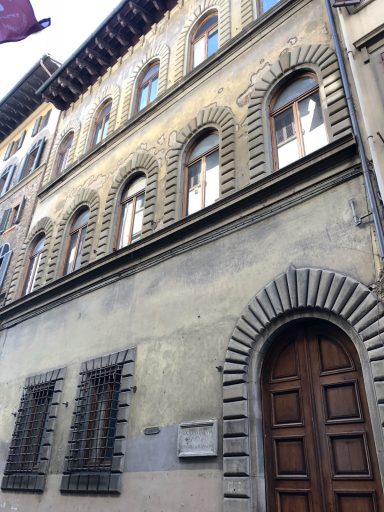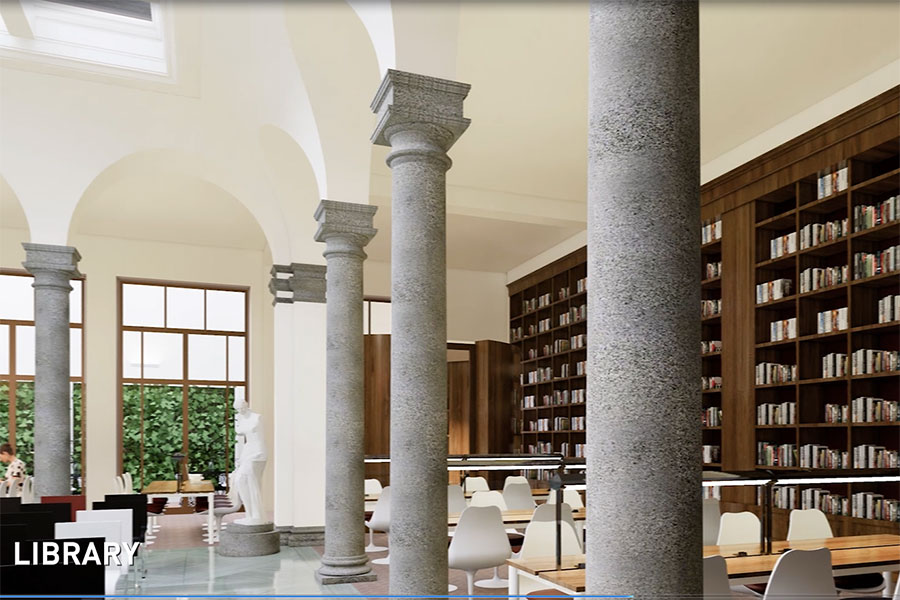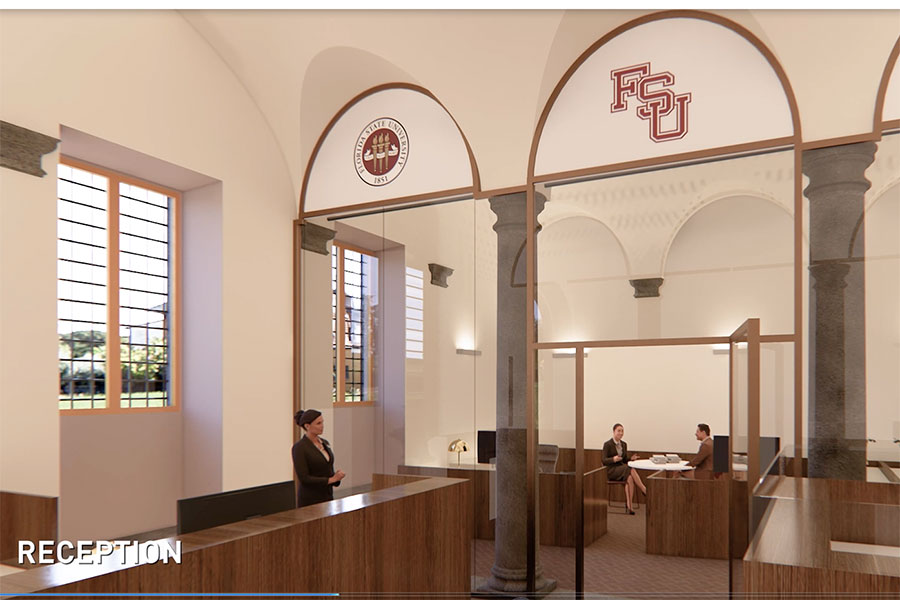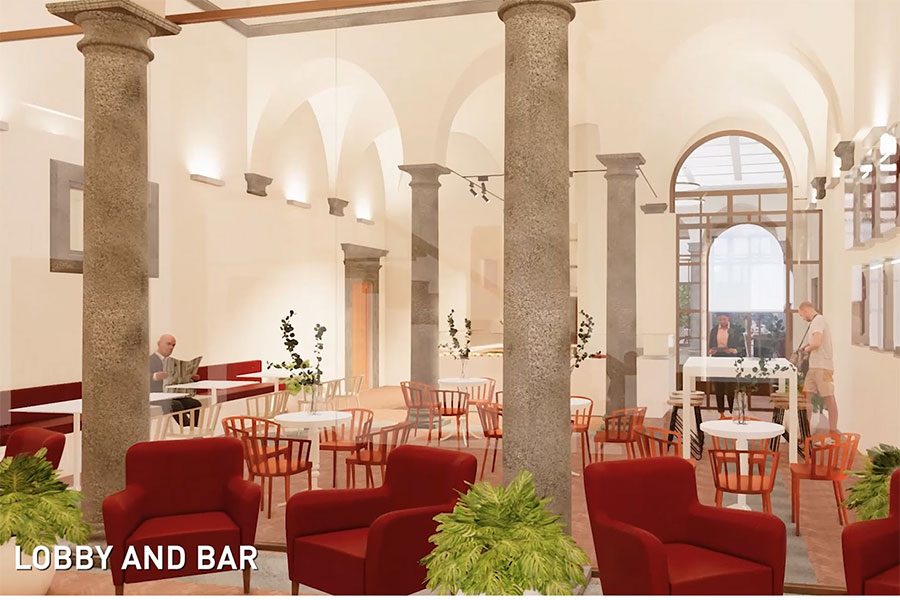
Early next summer, Florida State University International Programs Italy will enter the future by stepping 500 years into the past.
In June, renovations are to be completed on the Palazzo Bagnesi Falconeri, a 37,000-square-foot palace in the heart of Florence that dates to the time of Michelangelo. FSU will move its Florence study center to the newly renovated building.

In addition to serving as a hub of research and learning, the building will be a home away from home for visiting FSU students and faculty. It will provide space for them to congregate, learn and experience the countless artistic and historical wonders of a city that sparked and cultivated the artistic explosion of the Renaissance.
The building sits in the heart of Florence overlooking the Arno River, approximately two blocks from the Uffizi Gallery and City Hall. It is also a short, 10-minute walk from the Duomo and the Ponte Vecchio.
Jim Pitts, FSU’s longtime director of International Programs said this acquisition and renovation is the culmination of over 20 years of searching for a permanent home for a study center in the heart of the Renaissance.
“We finally found the perfect facility, which we are transforming into a modern study center to serve the needs of FSU for generations to come,” he said.
Frank Nero, director of FSU International Programs Italy, said he’s thrilled about the new building. In addition to addressing a classroom shortage in the current facility, Nero said the new study center will help promote an immersive experience for students.
“It’s a beautiful building but we don’t want to be an enclave,” he said. “We want students to explore. We want to see how is the program integrating students into Florence? And how is the program leaving a positive imprint on Florence?”
While the exact date of the building’s construction isn’t known, it dates to the Florentine branch of the Bagnesi Family, which died out in 1635. Through the centuries, ownership of the palace passed between some of Italy’s wealthiest families.
In the early 20th century, the palace became the headquarters of the Tuscan Gas Company, which conducted extensive renovations in the 1930s. FSU’s renovations began last June.
The historical core of the Palazzo Bagnesi consists of three floors that rise around a large central courtyard. Once renovated, the courtyard will be enclosed with a skylight and house a library and study space. Plans call for a grand entrance featuring soaring archways and columns. In addition to the library, the ground floor will include a reception area, coffee bar, experiential kitchen and outdoor patio.
The second floor will feature 10 classrooms, offices, a sewing and textile lab as well as a newsroom and media lab.
The third floor will house student apartments with room for 24 students. FSU has several other residences nearby for the additional students in the program. Program enrollments typically range from around 85 in fall and spring semesters to 165 in each summer term.

Nero noted that the team at University Libraries has been instrumental in assisting with plans for the renovation. Having the library as the central feature of the study center reinforces, physically and symbolically, that learning is at the heart of FSU Florence.
Lucia Cossari, associate director of FSU International Programs Italy, said the updated building will meet the demands of a top-flight international program.
“Students will have a new, permanent home in the heart of the Florentine community, which will reflect the values associated with FSU, the FSU Florence Program and all of the people who make up and who have made up our community,” she said. “It is a structure that embodies this spirit, along with art, history, culture—in an exceptionally special and unique place in the world.”
Pitts reiterated the importance of having a home that does justice to the university’s rich history in Florence, dating back to the arrival of FSU’s inaugural class in Florence in 1966. The first program coincided with historic flooding that left swaths of the city submerged in mud. The FSU student contingent was celebrated in the city and beyond for their decision to remain in the city and their devotion to helping rescue precious works of literature, art and cultural heritage. Together, the volunteers earned the nickname the “Mud Angels” for their effort.
Nero said the example and spirit of the Mud Angels continues to this day as volunteer cleanup programs in and around Florence remain at the heart of FSU’s program.
Cossari said that spirit of volunteerism is a tradition that creates a fuller experience for students.
“There is a connection established through volunteer work that flows both ways,” she said. “The students learn but they also carry the culture of FSU, the friendliness and hospitality to Florence.”
Cossari said she ultimately hopes the study center will build upon this outreach and host programs that involve local students.
“This is an opportunity for a great collaboration between Italian students and FSU students,” she said. “Italian students having access to these resources will help facilitate cultural exchange.”
For more information about FSU International Programs, visit international.fsu.edu.








